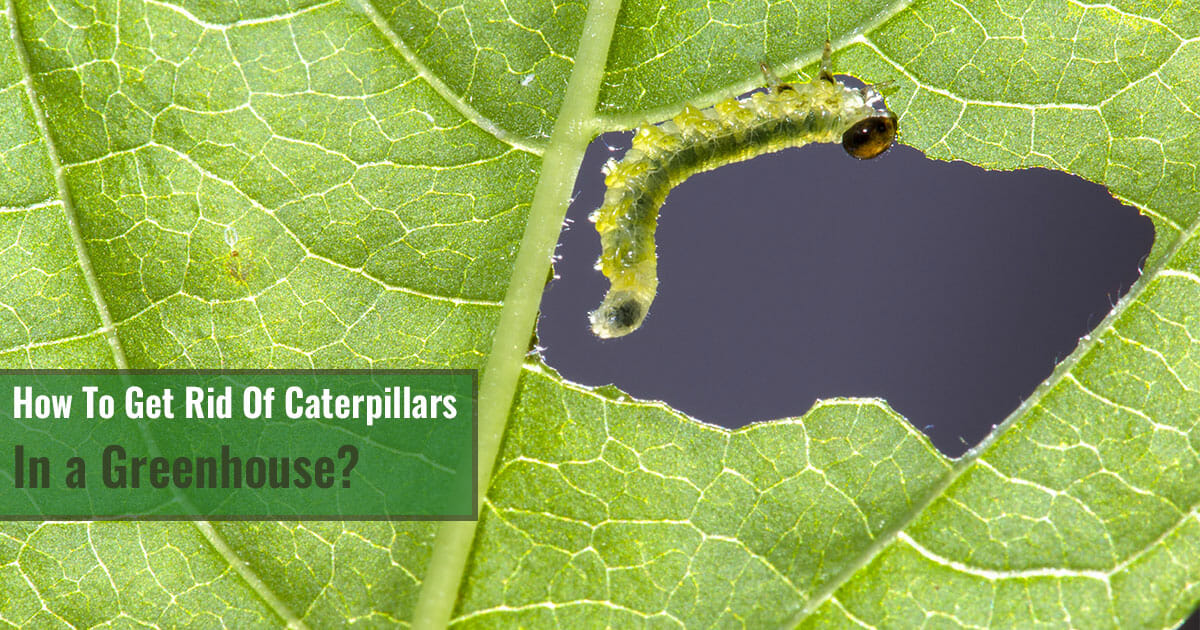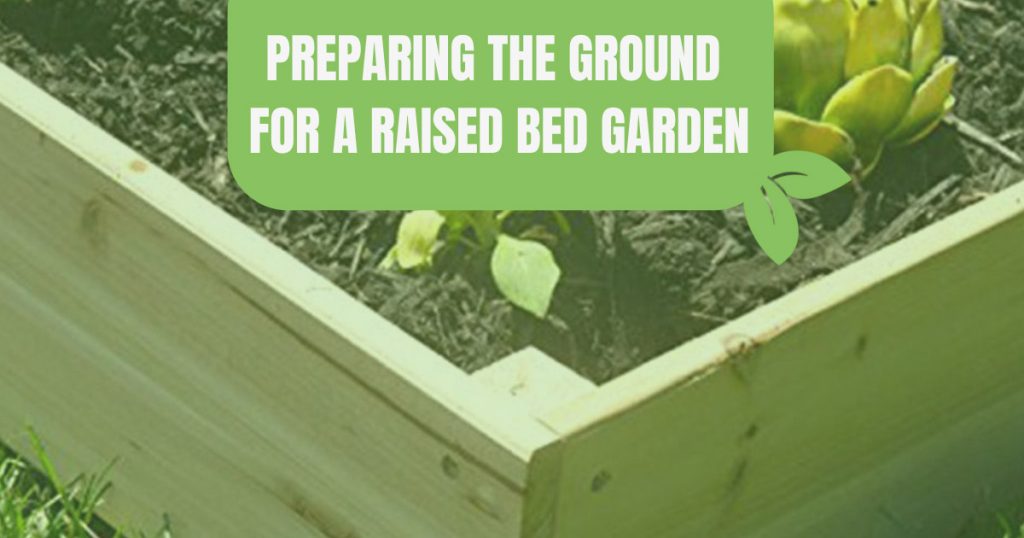

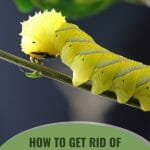

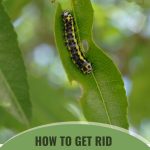
Most greenhouse gardeners underestimate the damage that caterpillars can inflict on their greenhouse plants. Although greenhouses offer protection from many pests, insects like caterpillars can still find their way inside and wreak havoc on all of your hard work. Caterpillars are voracious plant-eating pests that can cause a lot of damage, very quickly.
To establish and maintain a caterpillar-free greenhouse, you’ll need to arm yourself with some basic caterpillar knowledge in addition to trusted chemical-free pest control methods. You can get rid of caterpillars in your greenhouse by handpicking and by applying B.t. or neem oil. You can keep your greenhouse caterpillar-free by combining various preventative and repellant methods.
Pest control in a greenhouse requires skill, knowledge, and keen observation skills. In this article, we’ll go over different kinds of caterpillars, how to look for them, and what methods you can use to get them out of your greenhouse.
What are caterpillars and how do they get into my greenhouse?
Caterpillars are the larvae of moths and butterflies, and they come in a wide variety of colors and sizes. Which types of caterpillars you’ll find in your greenhouse depends on your climate as well as the kinds of plants you’re growing. Most caterpillars (especially the ones we consider pests) eat the leaves of plants, although they’ll also feed on fruits, stems, and even roots.
You’ll mostly find caterpillars in your greenhouse during summer and early fall. As with most insects, caterpillars go into hibernation during the winter. Although insect pest activity should decrease during the winter, note that your greenhouse might be warm enough for continued pest activity.
Caterpillars usually don’t find their way into a greenhouse by crawling in. Instead, it’s more likely that adult moths or butterflies fly inside through a gap or an open door and use the opportunity to lay their eggs.
Once hatched, the voracious caterpillars usually stick to a single type of plant. Some caterpillars prefer tomatoes (like the tomato hornworm) while others will munch away on lettuce, cabbage (like the cabbage looper), or flowers. They tend to hide under leaves or at the base of plants during the day and will come out at night to feed.
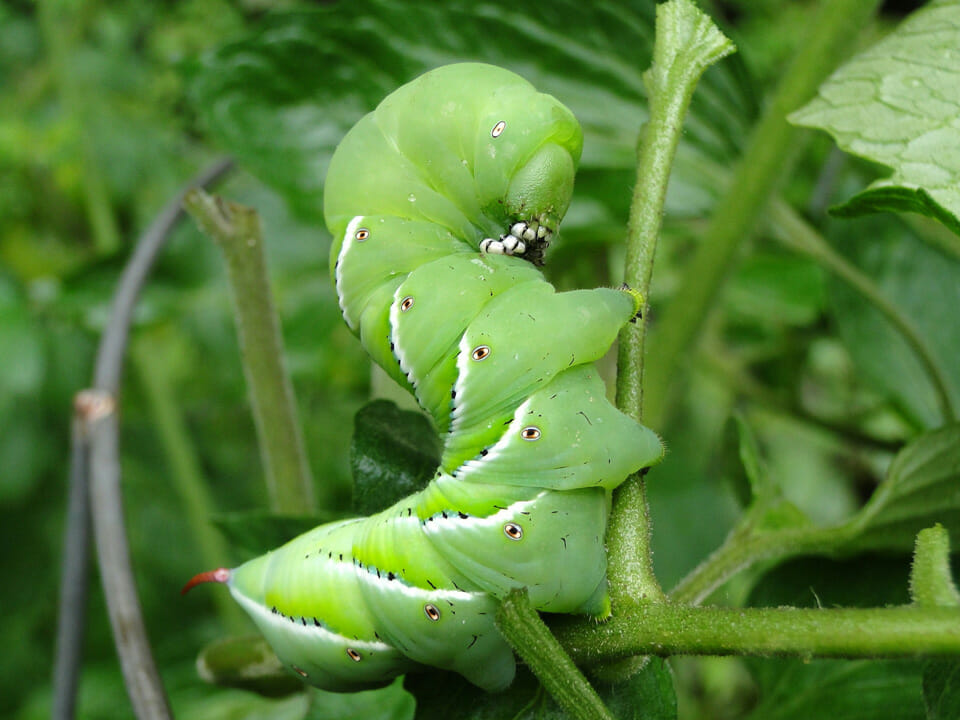
Are all caterpillars harmful to your plants?
Despite their reputation, not all caterpillars are garden pests. In fact, there are a few harmless caterpillars that you should take care not to eliminate. Monarch caterpillars, for instance, only feed on milkweed, while woolly bear caterpillars mostly feed on flowers and other native vegetation. In fact, caterpillars that mature to become moths and butterflies are essential contributors to pollination.
A few caterpillars in the garden or greenhouse is a good thing, but having too many (or too many of the wrong kind) can mean destruction in your garden. Prevent this by taking certain steps to keep your greenhouse caterpillar population in check.
6 steps to prevent and get rid of caterpillars in a greenhouse
Now that you’re armed with basic caterpillar knowledge, it’s time to take control of the caterpillar population in your greenhouse. Luckily, we’ve compiled six effective, organic, and chemical-free caterpillar control methods that can be used to prevent, repel, and get rid of caterpillars in your greenhouse.
1. Rotate your crops regularly
One of the best ways to organically control caterpillars is by rotating your crops consistently. Crop rotation is an effective pest control because it disrupts the life cycle of insects. Adult insects lay their eggs in the soil or on the leaves of their favorite crop. When those larvae emerge to find a crop that they can’t feed on, they’ll die and fail to keep reproducing.
In general, you should never plant the same plant twice in one area, or even the same family of plants. For instance, after harvesting cabbage (which will no doubt have attracted some caterpillars), consider growing a root crop such as carrots or beets.
Crop rotation, when practiced consistently in your greenhouse each season, can drastically reduce the damage caused by caterpillars.
2. Repel caterpillars with potent plants
You can repel caterpillars by planting strongly-scented plants such as rosemary, thyme, lavender, onions, and garlic around your vulnerable crops such as lettuce and cabbage. These repellent plants will not only drive away moths and butterflies looking to lay eggs, but they have the added benefit of attracting potential natural predators of caterpillars such as ladybugs and wasps.

Consider planting repellant plants around your greenhouse to tackle the caterpillar population. However, note that this method is a long-term preventative method. If you’re currently dealing with a caterpillar infestation, make sure to combine this step with others in this article.
3. Cover your plants
Covering your greenhouse plants with a row cover creates a barrier that will protect your plants from caterpillars. After all, caterpillars can’t damage your plants if they can’t reach them. A thin mesh row cover is best for covering young plants, as it will still let in light and moisture, but keep out the pests.
Not only do plant covers keep out most caterpillars (some might still find gaps to crawl under), they prevent butterflies and moths from laying eggs on your plants in the first place. As a result, row covers make for a good preventive strategy against caterpillars.
4. Handpick caterpillars off your plants
When you spot caterpillars munching on your greenhouse plants, one of the surest ways to eliminate them is simply removing them by hand. Put on a pair of gloves, make a round of your greenhouse, and pick off any caterpillars you find, especially on the undersides of leaves! You can drop them into a jar of water, or simply squash them underfoot.
If you have chickens, they might appreciate the sweet treat. For non-lethal control, you can relocate the caterpillars to another part of your garden where they won’t affect your valuable crops.
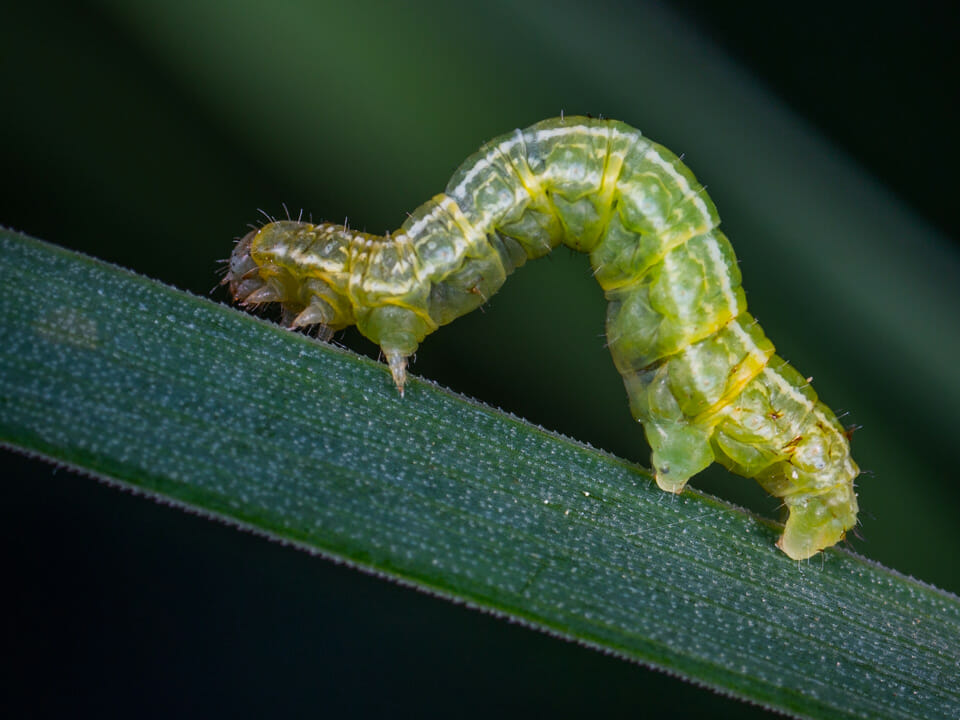
Hand-picking caterpillars is the most immediate form of control, although it can be time intensive. However, since it involves you moving about the greenhouse observing your crops, this isn’t necessarily a bad thing. Make your rounds early in the morning or just before dusk, when caterpillars are most active.
5. Get rid of caterpillars with Bacillus thuringiensis (B.t.)
Another common method of dealing with caterpillars is by applying Bacillus thuringiensis. B.t. is a naturally occurring bacterium in soil and a natural pesticide against certain insects, especially caterpillars. Crystal proteins in B.t. paralyze the digestive system of the caterpillar shortly after ingestion. Without being able to feed, the caterpillar soon dies.
Although B.t. isn’t harmful to humans and pets, you should always use care when applying it (or other pesticides) in your garden or greenhouse. Timing is key for the best results. You want to spray your plants when caterpillars will be munching away on the leaves. Additionally, B.t. degrades quickly when exposed to sunlight, so spray your plants early in the morning or evening.
There are various commercially available forms of B.t. that come in either liquid or powder form. Once you’ve diluted the proper amount of solution in water, spray your plants thoroughly, especially under the leaves where caterpillars might be hiding. Caterpillars that ingest even a small amount of B.t. will be rendered unable to feed, even if they don’t die right away.
6. Protect your plants with neem oil
Neem oil is often regarded as an effective all-in-one natural pesticide. It’s extracted from seeds of the neem tree and is widely used in pest control as well as a variety of other products. It works as a pesticide mainly by inhibiting feeding, but it’s also a potent repellant. Although effective against a large variety of insects, it’s considered safe for humans and pets.
To apply neem oil to plants infested with caterpillars, simply dilute about 1 ounce per gallon of water, adding a few drops of natural dish soap to emulsify the mixture. Thoroughly spray the mixture all over your plants where caterpillars are hiding. Spraying is best done in the morning or evening to prevent leaf burn or killing beneficial insects.

4 homemade organic caterpillar deterrents
The six steps above will go a long way in keeping your greenhouse free from caterpillars. But for those of you looking for additional ways to protect your greenhouse dreams, there are a few easy homemade caterpillar deterrents that you might try. We recommend using these methods in addition to any of the above steps, since the best pest management system uses many techniques instead of just one.
Soap and water
An effective and inexpensive solution to stop caterpillars from devouring your plants is a simple mix of soap and water. This mixture doesn’t harm plants nor will it kill the caterpillars directly. It rather creates a slippery and unappetizing surface that will deter caterpillars and other insects.
Mix up a small amount of organic liquid soap in warm water. Pour the mixture into a spray bottle and then spray your veggies and crops, especially in affected areas. You can always test the mixture out on a small part of the plant to make sure it won’t harm the leaves before committing to a full-on foliar spray.
Chili spray
Another handy homemade caterpillar deterrent is a mixture of dried chili powder and water. The capsaicin in chilis irritates and therefore deters caterpillars. Mix up about 3 ounces of dried ground chilies with ½ gallon of boiling water. Allow the mixture to cool before adding another ½ gallon of cold water. Adding a few drops of liquid soap will help the mixture adhere to leaves.

Once at room temperature, pour the mixture into a spray bottle and apply it all over your plants! As with other homemade pest deterrents, you might want to test the mixture on a small part of a plant to ensure the plants won’t be harmed.
Garlic solution
Another ingredient you’re likely to have around the house that can be used as a natural insecticide is garlic. As with chili spray, an effective garlic spray irritates and deters caterpillars from your plants.
You can crush whole garlic cloves and mix them in vegetable oil. Add some black pepper and mild liquid dish soap, as well as about 2 quarts of water. Shake the mixture well, and let sit for about 24 hours before applying to your plants and sending those caterpillars scurrying away!
Vinegar solution
Finally, you can easily make a vinegar solution that will keep caterpillars from causing further damage to your crops in the greenhouse.
Simply mix 2 tablespoons of vinegar in 1 gallon of water. Put the mixture in a spray bottle, and spray to coat the plants affected by caterpillar activity!

